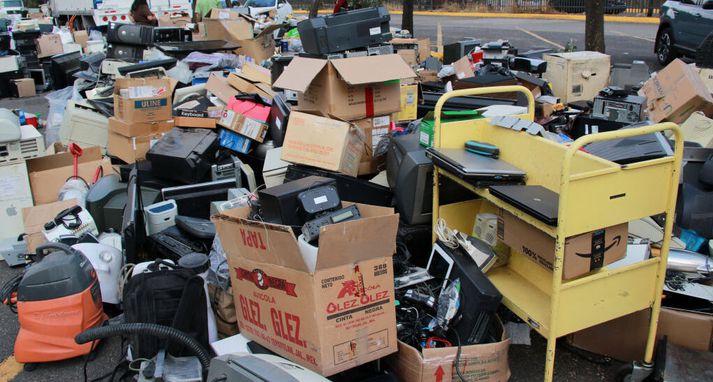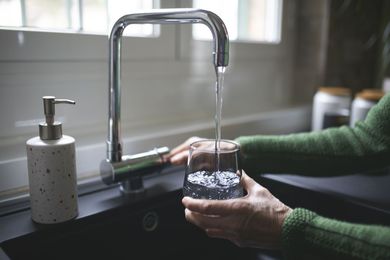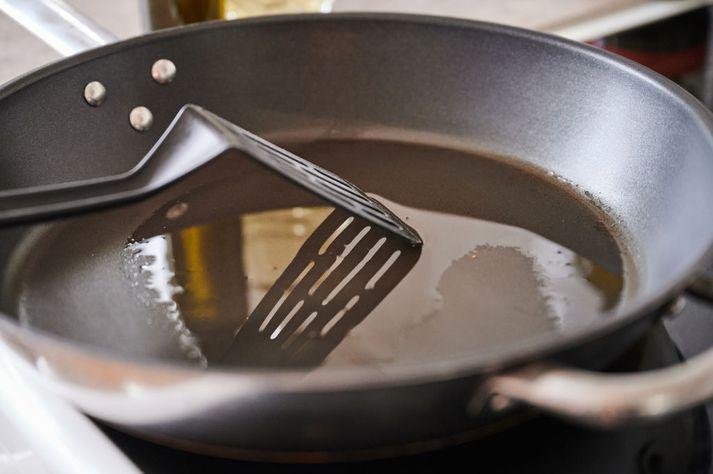Cooking with plastic utensils is a dangerous game, as heating increases the chance that plastic particles and toxins will leach into the sizzling food. The risk is even greater when the utensils are made of black plastic. A recent Wirecutter article on the subject suggests throwing black plastic out of your kitchen.
Black plastic toys, plastic takeaway food containers, kitchen utensils and meat containers in supermarkets may be potentially infectious as they may contain a high percentage of flame retardants.
Some flame retardants have already been banned because they are thought to increase the risk of cancer deaths. They have also been linked to effects on endocrine function, the thyroid gland, child development and the nervous system, the reproductive system and the immune system.
However, research has revealed that these banned flame retardants are still being found in products used for handling and preserving food, which has given researchers pause for thought.
Flame retardant materials in recycling
In 2018, Andrew Turner, a biochemist at the University of Plymouth, published one of the first papers to suggest that black plastic products might be made from recycled electronics. The clue that raised suspicions was the high percentage of flame retardants in black plastic. They found chemicals used to prevent televisions and computers from catching fire.

It appears that the sorting and recycling of plastics from such devices has resulted in flame retardants being mixed with products used by consumers in cooking, in food containers and in children's toys. The reason is believed to be a mistake in the sorting of electronic devices that have been mixed with recycled plastics intended for use in food storage and handling, toy manufacturing and other products that are not supposed to contain such toxins.
When plastic is recycled, it comes out quite ugly in color, so the plastic is colored to make it more appealing to the eye. The problem begins when these colored products are returned for recycling. The black color manages to bypass the photodetectors used to sort different types of plastic.
Manufacturers have started using a different type of black that can be detected in recycling, but unfortunately, black plastics containing these toxins are still in circulation.
The root is a much bigger problem
A study on the levels of flame retardants was published in the scientific journal Chemosphere last October, which found that the levels of flame retardants in kitchen utensils were close to dangerous levels.

However, it was later revealed that the researchers had miscalculated the amount that was considered very dangerous in an earlier version of the study, and the risk is therefore lower than previously thought.
However, the study drew attention to the possibility that hazardous substances could be hidden in the kitchen and that safety during recycling may be lacking when it comes to hazardous substances.
Those involved in the study say, however, that the results cannot be overturned and that toxins can be hidden in the kitchen, and therefore there needs to be transparency and strict rules to ensure safety in recycling that should prevent fire retardants from finding their way into kitchen utensils.
The eternal materials the biggest threat
You should also be careful not to use plastic utensils in other colors as they can cause plastic particles and toxins to mix with the food, especially when heated or if there are scratches or particles starting to come off the utensils.
Recent studies have shown links between these pollutants and heart disease, lung disease, and other health problems.
The Guardian delved deeper into the issue and looked at other aspects. It talks to Adam Herriot, who works for the environmental organization Wrap. He says that throwing all black utensils on one pallet could have a serious impact on the environment and suggests that people try to use plastic more wisely.
We also interview Mark Miodownik, professor of materials and society at University College London, who says that food packaging and its production are a major problem and that the root of the problem needs to be examined in a larger context.
Mark Miodownik says he wouldn't put black spoons at the top of the list of dangerous substances, but he's much more concerned about the forever chemicals added to plastic containers for food, clothing, and cosmetics that find their way into the body. Products containing these chemicals are increasing in number, and our knowledge of their effects on the human body is limited. Cases of the chemicals being found in people are also increasing, and it doesn't seem to be a positive thing, either for the body or the environment.

He also says that at the same time, plastic particles are in the water layers and although they may not have much effect, they can contain toxins that have a bad effect on the body. Plastic particles get into water pipes, among other things, when people wash clothes made of synthetic materials. This makes it difficult to limit the spread of the substances. He suggests that we try to deal with the substances that we cannot see, the eternal substances and the plastic particles because they are hidden everywhere.
It's nearly impossible to avoid all plastic use. But by replacing plastic spatulas, ladles, and other utensils with plastic, you can potentially prevent toxins from entering your food. But the problem is much bigger than the flimsy, black plastic utensils in your kitchen.
However, everyone is well protected and it is safest to use wooden or steel utensils in the kitchen.



